

 STUART JORDAN delves into the history of this trans-continental railway.
STUART JORDAN delves into the history of this trans-continental railway.
The history of railways in Russia begins in 1837, with a line linking two Imperial palaces. A second line linking St Petersburg and Moscow was built over the next couple of decades, built in the now universal (in Russia) 5ft (1520mm) Russian Gauge. This line was then extended to Warsaw.
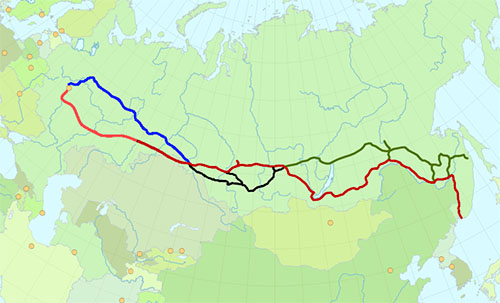
Trans-Siberian Railway (marked in red)
After the first Russian railways appeared in European Russia, several railway projects emerged in Siberia in order to improve the infrastructure and link the region to the Pacific Ocean. Siberia was very much viewed by the government in St Petersburg as a backwater not worth spending money on, but this self-determination worried them, and it brought connecting Western Russia to Siberia to the forefront of infrastructure planning. A line was planned for construction between Moscow and Vladivostok.
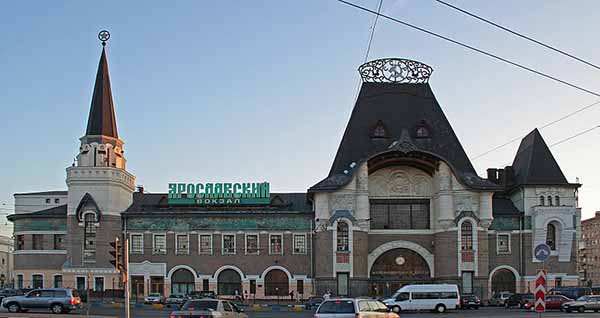
Yaroslavsky Station in Moscow, the western end of the Trans-Siberian.
It became clear that the railway would be ideal to cover the vast distances involved in trading across the Russian Empire, which at this time was only navigable by wheeled transport or by river/canal. The railways were a reliable and faster way to carry goods.
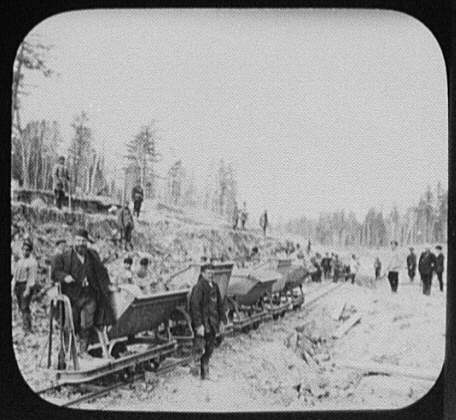
Convict workers near Khabarovsk in 1895.
Construction began in 1891, with the route split into seven sections which were built almost simultaneously. To save costs and to avoid land disputes, it was decided that although the Trans-Siberian would serve major towns and cities, it would not make it a priority to enter city limits and would avoid terrain which would increase costs. This meant some communities such as Tomsk missed out on a link to the line by nearly 50 miles.
Like the Trans-Continental Railway in the US construction work began from either end, using soldiers and convict labour. When the railway reached Lake Baikal in Siberia near Irkutsk the railhead originally stopped at each side of the lake. Two ships were built in Newcastle-upon-Tyne, disassembled, and reassembled in Russia. They carried the locomotives and rolling stock across the lake until a connecting line was built.
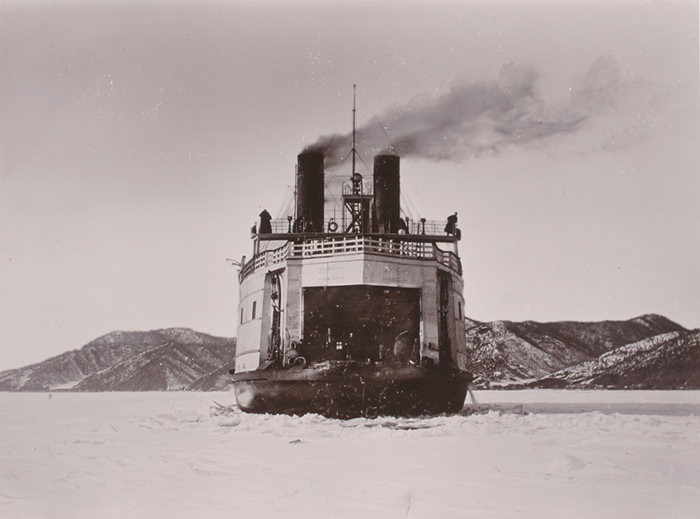
SS Baikal on Lake Baikal. Image: Tyne & Wear Archives & Museums.
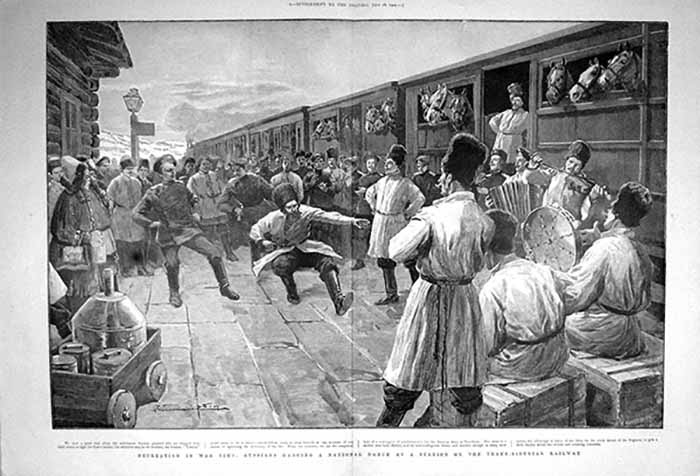
A romanticized Western view of the railway, 1904.
Although the line was formally completed in 1916, it began to be used before that. Wheat and other grains were taken west, and migrants headed the other way to the newly accessible lands in the East. The war with Japan in 1904 exposed the limitations of the single line constructed – troops and supplies heading to the front were disrupted by trains carrying wounded heading back west.
When revolution came in 1917, a multi-national force landed in Vladivostok to support the Tsar against the Bolsheviks. Bridges and lines were blown-up and attacked by Red partisans, leading to the foreign and White Tsar forces in the area to be defeated. After the end of the war, the Czechoslovak Legion, who were volunteers fighting against the Bolsheviks, used armoured trains to travel all the way to Vladivostok and from there return to Europe.
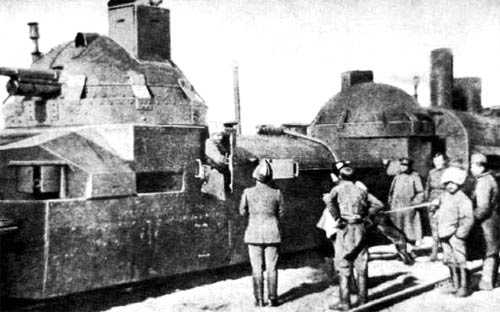
Czechoslovak Legion troops with an armoured train.
The Trans-Siberian served both sides during the Second World War. Due to their non-aggression pact with Germany, Russia allowed supplies from Japan (specifically rubber) to be moved west to Germany. Thousands of tonnes were transported in this way, essentially supplying their future enemy. Jews and others who opposed the Nazis would use the Trans-Siberian to escape Europe and cross the Pacific to the USA.
This situation changed on 22nd June 1941 when Germany invaded Russia. The line was then used in reverse. Goods and armaments from the USA would come across the Pacific and be transported to the front line via the Trans-Siberian. Entire towns and factories would be relocated further east, a safe distance from the German advance.
Today, the line forms part of the new Eurasian-Land Bridge. Part of this Chinese initiative is to revive the old Silk Road trade route, with freight travelling by rail from the Far East to European ports. Although the line is very popular with tourists, most of the passenger traffic is by domestic travellers.